by Amineddoleh & Associates LLC | May 18, 2023 |
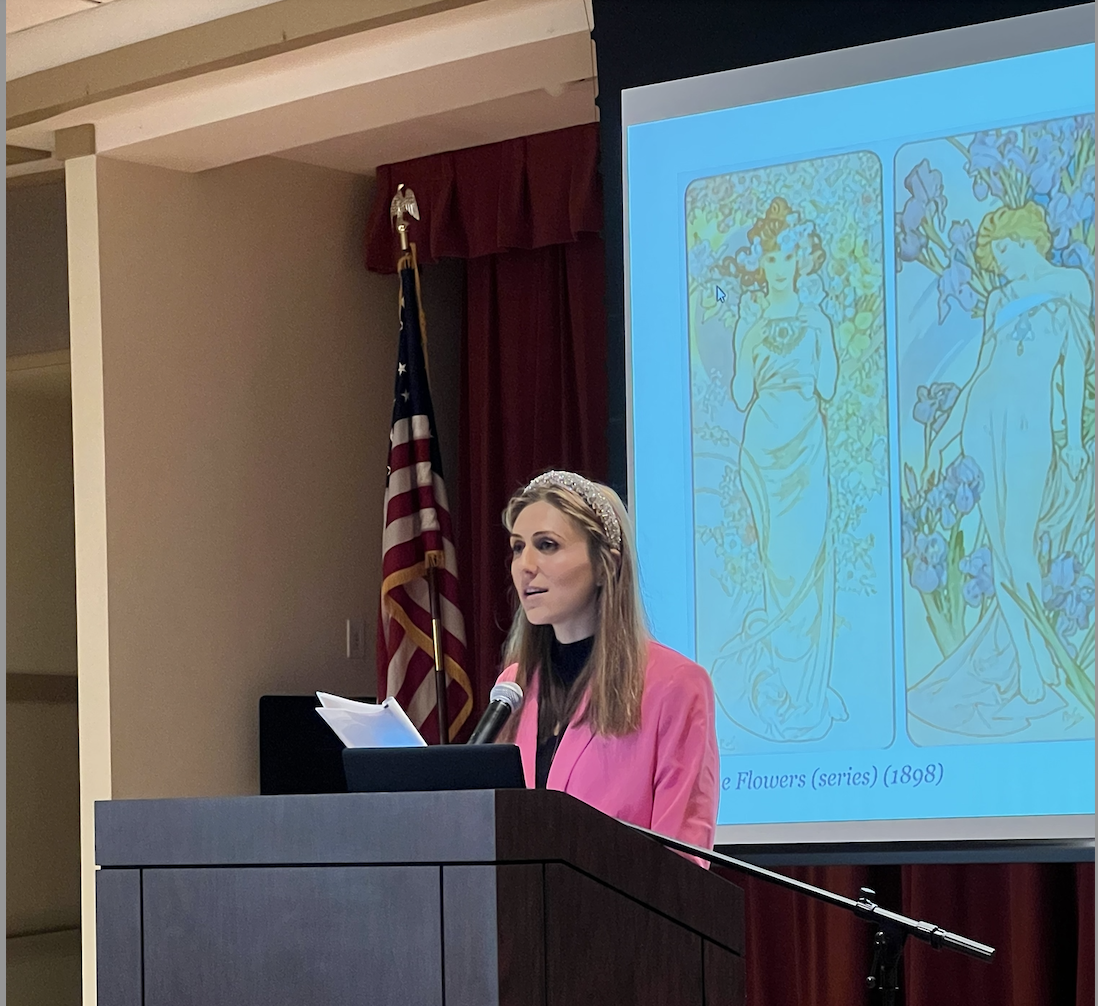
Maria discussing art and the law
Last week, associate Maria T. Cannon presented a lecture in Asheville, N.C. about the rise of celebrity art. Her presentation featured the work of the artist Alphonse Mucha. He is one of the first artists whose career trajectory was shaped through his depiction of a famous actress in his work. Today, artists commonly feature celebrities in their artwork, but this was not the case in the late 19th and early 20th centuries. However, time has shown that the use of celebrity images in artwork often increases the market value of the work. In response, laws have developed to protect celebrities and artists from exploitation.
Maria’s presentation began with the story of Mucha’s life and his relationship with the fabulous Sarah Bernhardt, the first modern celebrity. Maria then examined the legal framework that artists navigate today when they wish to feature images of celebrities in their artwork.
Thank you to the entire Deerfield Community for welcoming our associate to her first speaking engagement. And congratulations Maria!
by Amineddoleh & Associates LLC | Apr 13, 2023 |
At 6:30pm on Monday evening, April 15, 2019, the Cathedral of Notre-Dame de Paris began to burn.
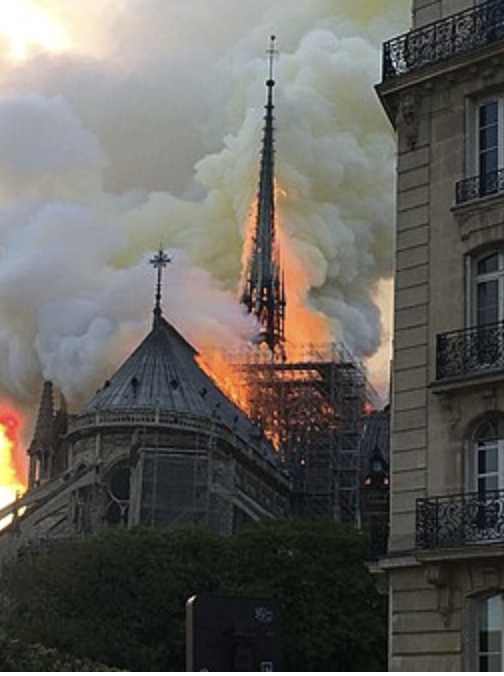
Notre-Dame Cathedral’s spire on fire on April 15, 2019. Image courtesy Antoninnnnn via Wikimedia Commons.
Considered a jewel of Gothic architecture, the inferno began in what has been referred to as the “forest” of wooden beams inside the Cathedral’s roof. These beams caught fire and collapsed – a big issue, because the wooden forest of beams had provided much-needed support for the entire structure. After the beams disintegrated, the Cathedral crumbled. Onlookers, who yearned for the building to be saved from disaster, lost hope. As the Cathedral sank, smoke and dust rose to overtake the horizon.
Four years later, the darkness has cleared and hope abounds. The shock felt by millions around the world has softened, and the Cathedral’s on-going renovation is chugging along like the Little Engine that Could.
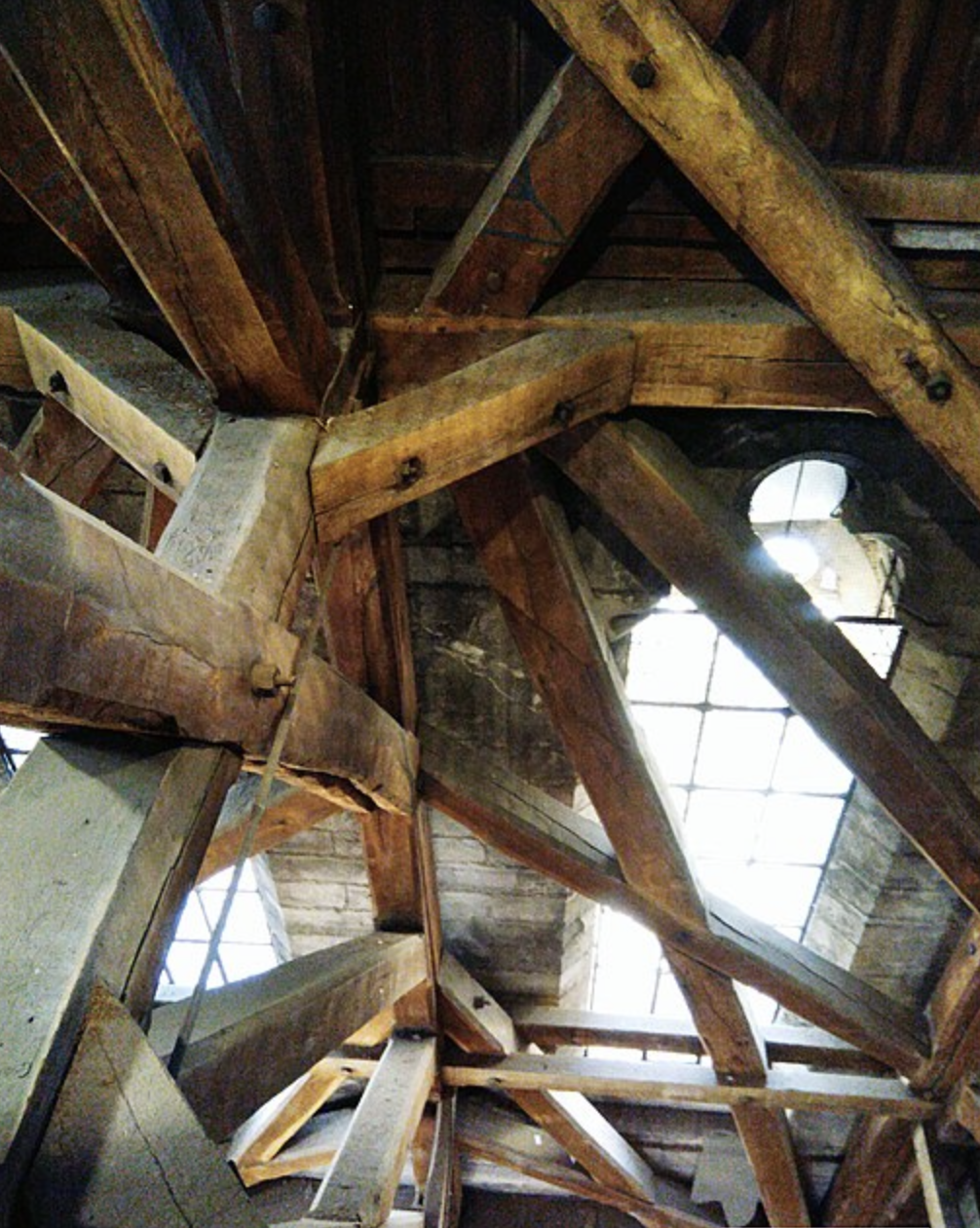
The inner framework of Notre-Dame, just months before the 2019 fire. Image courtesy SamuelPrr14 via Wikimedia Commons.
However, this chugging along is certainly that – a slow, steady pace. Originally, an anticipated re-opening date was set for April 19, 2024. This date would have been ideal as it is the fifth anniversary of the fire. Yet, due to delays, that plan has been scrapped. Several things have gotten in the way of the original timeframe (two major ones being a global pandemic and the outbreak of war in Ukraine).
Renovators, seeing that the finish line was not quite in sight to make that deadline, made adjustments. “Plan B” was to have the project finished by the summer of 2024. This would have meant that the reveal of refreshed cathedral would coincide with Paris’s highly anticipated 2024 Summer Olympic Games. Unfortunately, that plan has also been scrapped and tossed in the rubble. The newest official re-opening goal date is set for December 2024.
However, it is important to understand what “re-opening” entails. December 2024 is unlikely to mark the completion of all necessary renovations. Total completion by this date is not the goal; rather, it is to have the space ready to celebrate Catholic Mass by that time. As Culture Minister Rima Abdul-Malak explained, while tourists will be able to visit the site in late 2024 and attend Mass, renovations will continue into 2025.
Does it seem strange to celebrate Catholic liturgy in a half-finished construction site? Perhaps, but the French are the ultimate authority on the “chic, messy effortlessness” that results from a project left not-quite-done. Plus, those feeling impatient may quench their thirst for Notre-Dame de Paris by arriving in Paris, post-haste! A new exhibition has opened, entitled “Notre-Dame de Paris: at the heart of the construction site.” Visitors can expect to reap the inside scoop of the on-going renovation, plus view some remains from the fire, as well as salvaged artwork from the Cathedral.
In truth, the delays that have pushed back the opening, and made the aforementioned exhibit possible, are likely a good sign. The extended time for renovations signifies the seriousness and care being put into this renovation by the expert team on the ground in Paris. This is not surprising, seeing that the Cathedral is a highlight along tourists’ itineraries, and the structure has inspired generations of artists and writers.
The situation is as poet Mary Oliver wrote: “Things take the time they take. Don’t worry. How many roads did St. Augustine travel, before he became St. Augustine?”
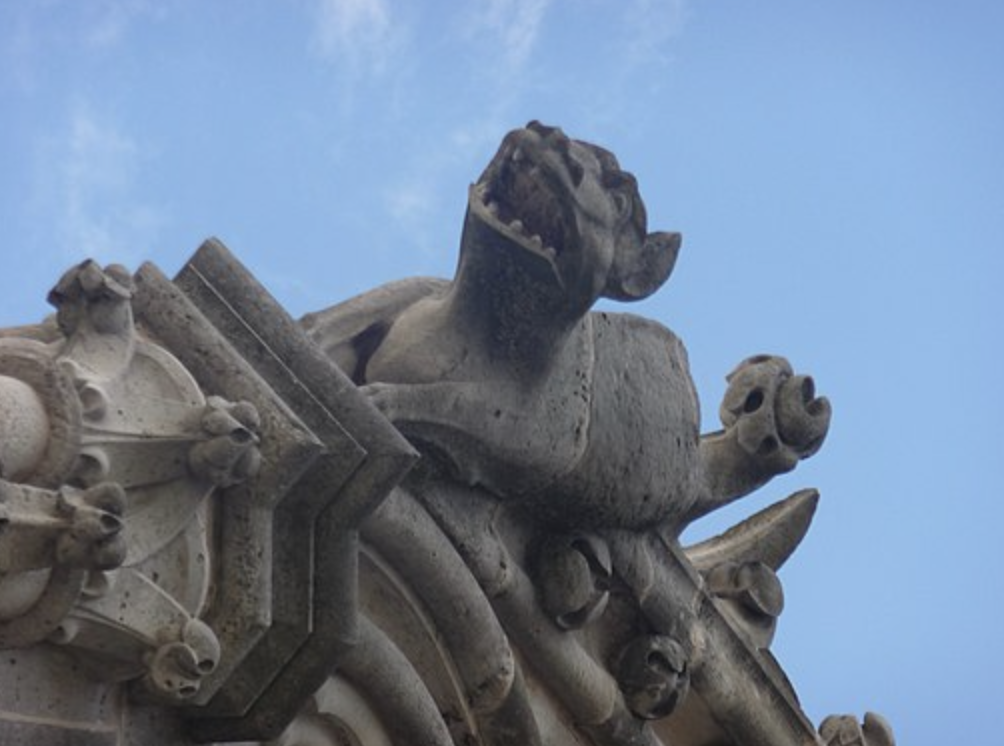
One of the classic gargoyles atop Notre-Dame, photographed in 2016. Image courtesy Marcok via Wikimedia Commons.
Who is the genius leading this team of experts? The man entrusted with this special renovation project is none other than famed architect Philippe Villeneuve. According to Paris’s Official Tourism site, Villeneuve’s plan from the get-go has been to “rebuild the cathedral identically, including the spire.” The architect’s mission to retain the building’s original structure seems to be the foundation from which all other decisions are made. Even so, some of the plans have departed from the Cathedral’s original design. This has caused quite a bit of drama. The reason for the drama is that, unsurprisingly, there have been a lot of opinions about how the phoenix of Notre-Dame de Paris should rise from the ashes.
The online rumor mill has added fuel to the fire. Last year, rumors surfaced regarding plans to depart from the Cathedral’s original plans, sacrificing austerity for new tech and additional features. This caused widespread concern among art experts and historians that the Diocese of Paris was attempting its own “woke Disney revamp.” Plans to create features such as “emotional spaces” and “a discovery tour” sparked French academics to doom the proposals as an example of “inanity [meeting] kitsch.”
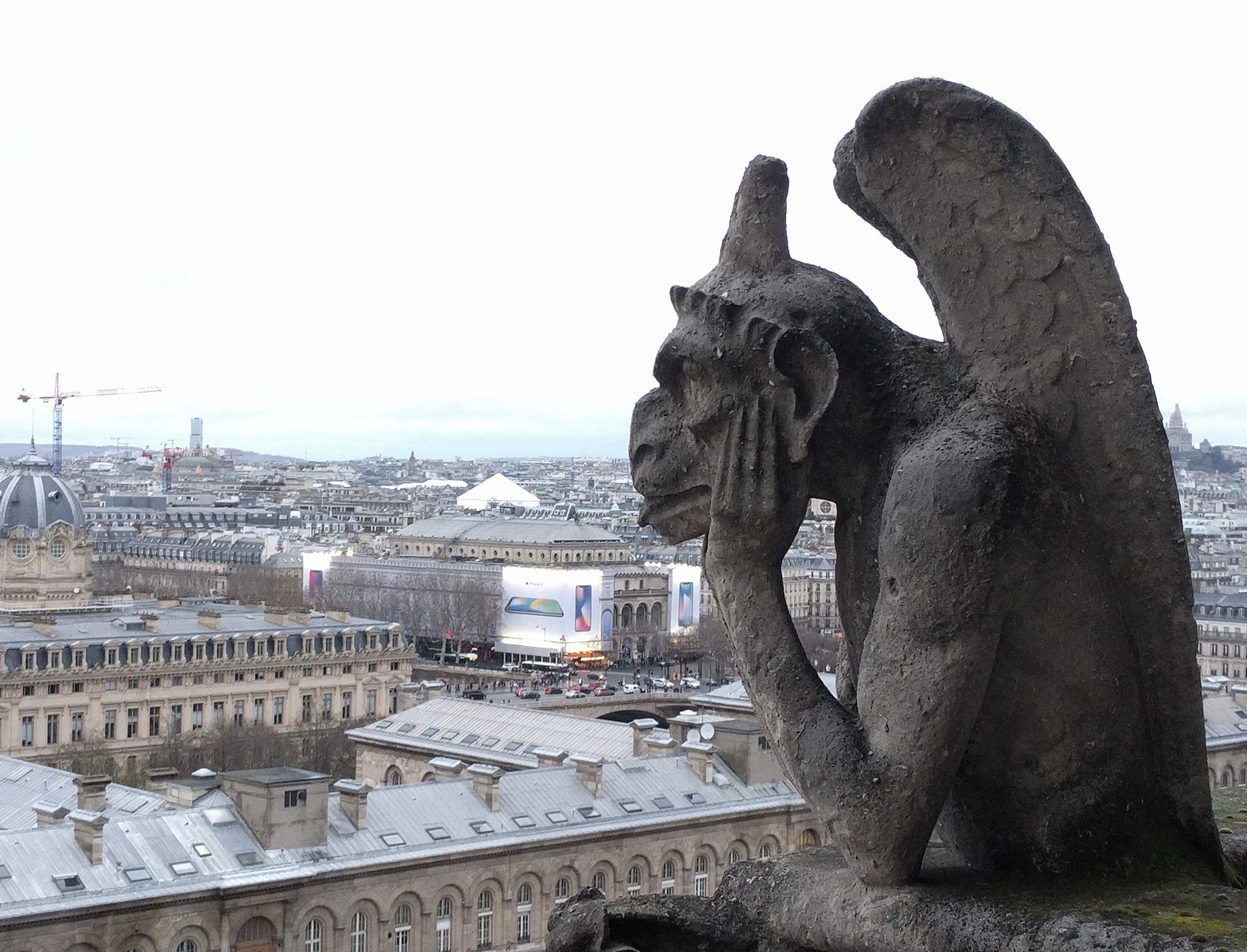
A contemplative gargoyle on the North Bell Tower in 2018, perhaps foreseeing the coming fire. Image courtesy Mari Doucet via Wikimedia Commons.
The “woke Disney revamp” comments ironically threw serious shade on the media powerhouse that brought new fame to Notre-Dame in the 1990s with the release of the animated film The Hunchback of Notre Dame. When approached for comment about the unfavorable comparison, Mr. Mickey Mouse chose not to respond. Those familiar with the matter claim that Mr. Mouse had suggested sending a “poop emoji” to the art historians’ to counter the vitriolic attack, but was dissuaded by publicity experts from doing so.
Despite criticism of any change from the original design, France’s National Heritage and Architecture Commission has approved several proposals integrating modern updates. These include installing modern lighting and contemporary works. Strong adherents to the traditional Gothic integrity of the space oppose such changes; on the other side, the Cathedral’s pastoral staff claim that some changes to the original plan will make the experience of visiting the Cathedral more enjoyable overall.
Additional controversial proposed changes favored by the Diocese include moving the tabernacle and other sacred objects. The purpose behind these changes is to encourage more of a dialogue between the visitor and the Gothic architecture of the sacred space when walking through the space. French authorities hope that these changes will retain the traditional feel of the original layout, while “bringing more a little more sense to the visitor.” As these changes seem directed at easing crowd flow for when the Cathedral is once again a major tourist site, they have faced fewer critics.
Lookout for the Spire
When word broke loose that there were plans to significantly change the monument’s overall architecture, the French Government got involved, to make sure that crucial elements of the Cathedral remain the same. At one point, a change to the iconic look of Notre-Dame was suggested in the form of a new, more modern spire. In response, President Emmanuel Macron intervened. He had been approached by cultural heritage experts who convinced him that a dramatic overhaul in design would drastically alter the integrity of the globally recognized monument. Macron stepped in to nix the change and prevent the 19th-century spire from being replaced with a more contemporary update. Reconstruction of the spire did not start until last year, because the monument itself had to undergo significant reconstruction to be able to support the 315 ft spire. True to his word, Macron has ensured that the new spire will match the one lost by fire. Those scanning the Parisian skyline will once again see the fabled towers in renewed glory.
A History of Renovations
Many people will be surprised to learn that the so-fought-for spire was not, in fact, part of the original 12th century Gothic design. The iconic Notre-Dame de Paris spire that the world knows and loves was added in the 19th century, by architect Eugène Voillet-le-Duc. Voillet-le-Duc’s involvement was the result of a major renovation effort at that time, spurred into life by renewed interest in the Cathedral following Victor Hugo’s famed tale.
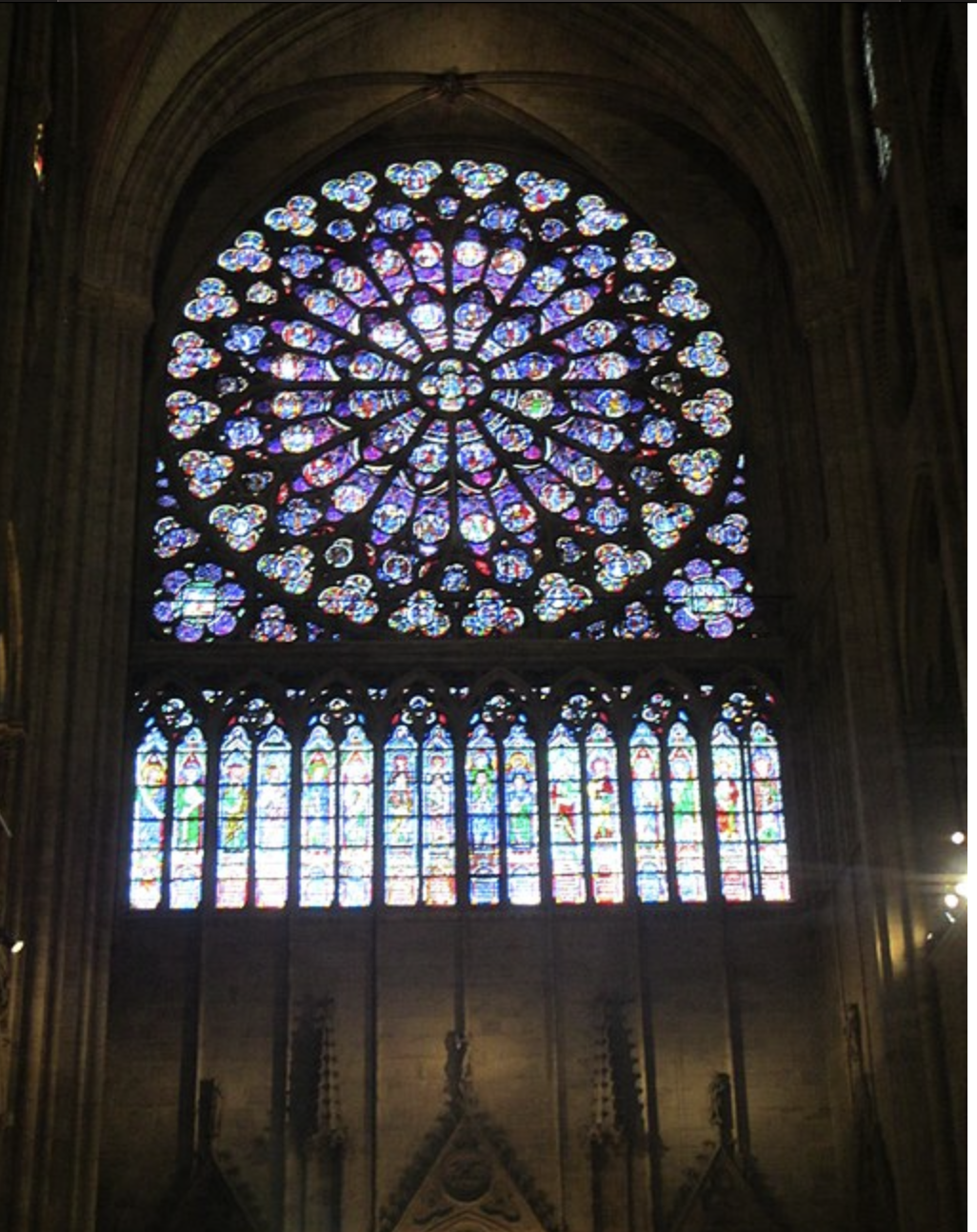
Notre Dame Rose Window in 2014. Image courtesy Jeremy Hylton via Wikimedia Commons.
That effort led by Voillet-le-Duc marked the most recent major renovation of Notre-Dame de Paris, but not its first major revamp. In 1699, the Cathedral received a major facelift in 1699, courtesy of the redecoration effort led by Hardouin Mansart and Robert de Cotte. Prior to that, several reconstruction and renovation efforts occurred, including the installment of the north and south rose windows.
In fact, the entire conception of Notre-Dame de Paris as we know it was the result of a major reconfiguration of sacred space. The original construction of Notre-Dame de Paris, commissioned by Bishop Maurice de Sully in 1163, replaced a demolished 4th century Cathedral of Saint Étienne. In that sense, one could argue that Notre-Dame de Paris has been an HGTV special from Day One.
The Future of Notre-Dame
Will this next reveal mark the final glow-up of this storied monument’s life? Or is this version of Notre-Dame de Paris simply another notch in the belt of this hero’s journey? If anything, this is a cathedral that has proved it knows how to reinvent itself and start anew. Plus, with the aid of new technology, the state-of-the-art Cathedral will be even more regal than before. Hopefully, 2019 was the last time Notre-Dame de Paris will face a fire. A renewed and refreshed cathedral will be worth the wait – and will stand for many centuries to come as a symbol of courage and resilience in the face of inferno.
by Amineddoleh & Associates LLC | Feb 13, 2023 |
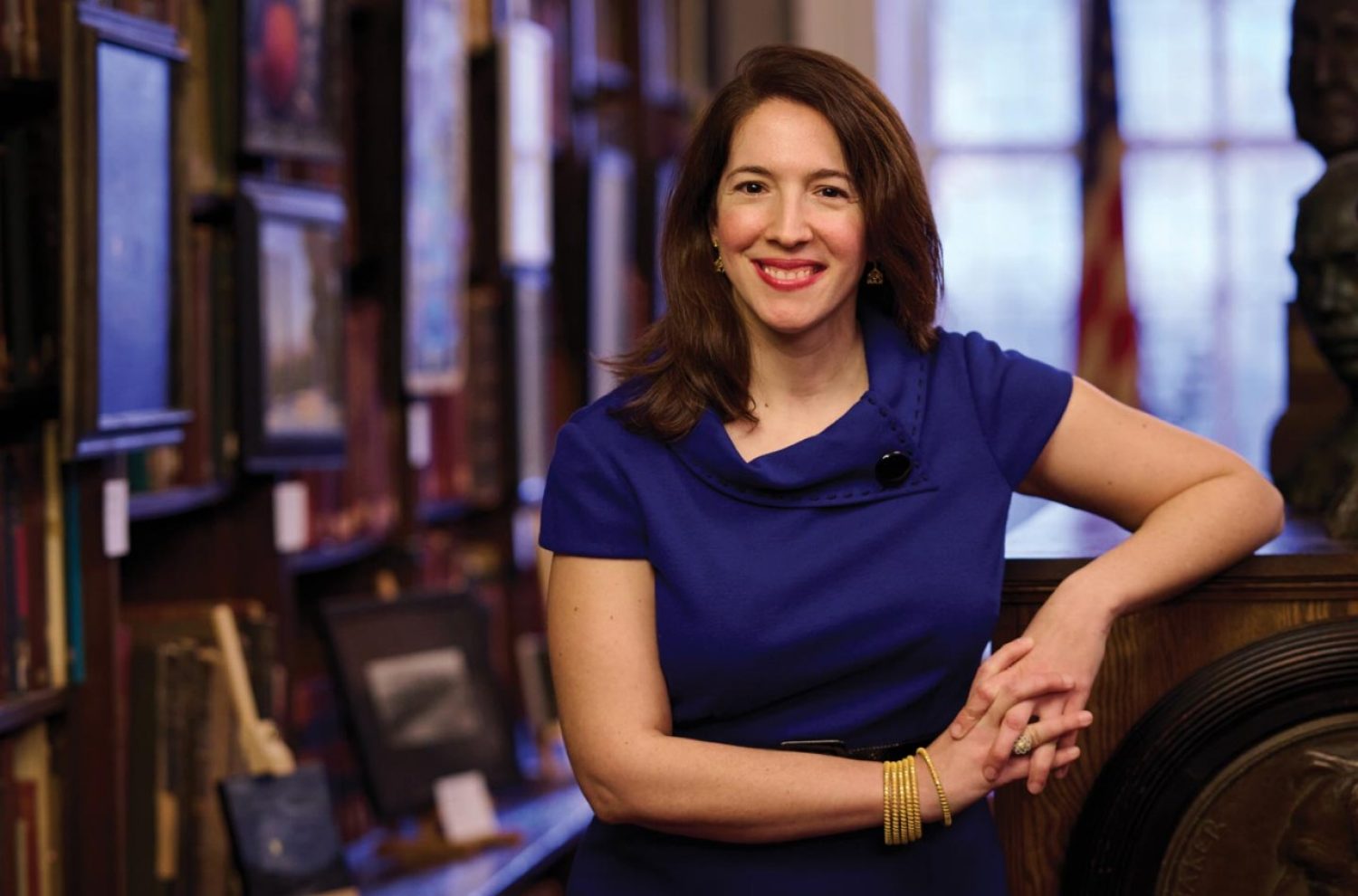 Leila is the feature story of Boston College Magazine’s Winter 2023 issue. The article follows Leila’s art law career along with the story of the looted marble bust that was restituted to Germany in 2022. You can read the article HERE.
Leila is the feature story of Boston College Magazine’s Winter 2023 issue. The article follows Leila’s art law career along with the story of the looted marble bust that was restituted to Germany in 2022. You can read the article HERE.
by Amineddoleh & Associates LLC | Jan 26, 2023 |
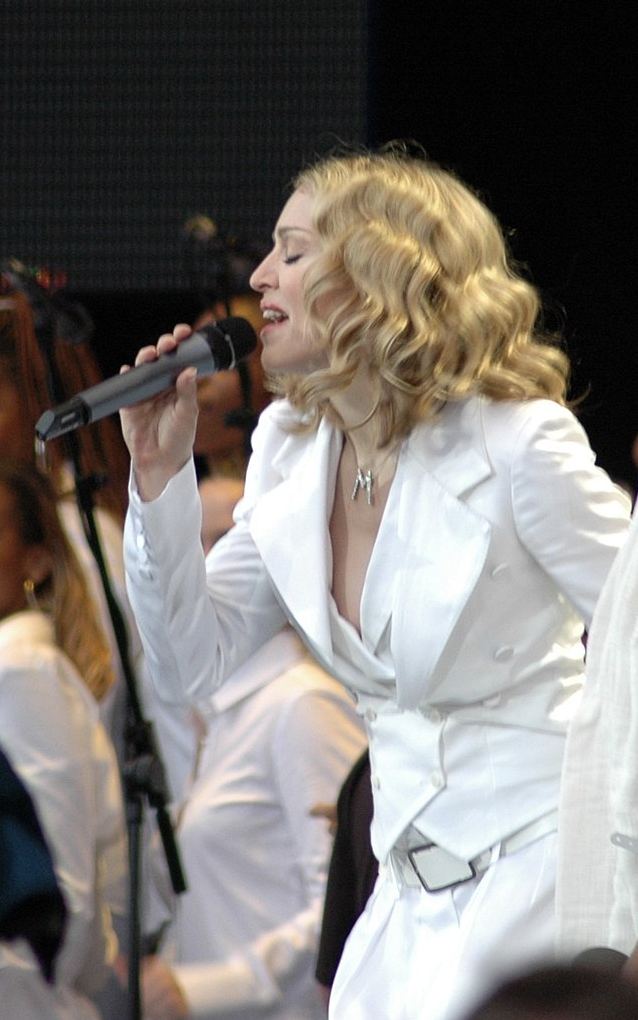
Madonna in concert in 2005. Credit: David Cushing, https://www.flickr.com/
Madonna, singer of “Vogue” fame, has been asked to negotiate a loan of an 1822 Jerome-Martin Langlois painting from her personal art collection. The mayor of Amiens requested that the singer loan the work to the Musée de Picardie in the French city. The painting was purchased by Madonna in 1989 at auction, around the time that the singer’s fourth studio album was released. Decades later, in 2015, a museum curator recognized the painting after Madonna was featured in an issue of the weekly publication Paris Match Magazine. The article included a photograph of the “Material Girl” in her home, with the painting visible in the background.
When the curator examined the subject matter of the painting in the photo – a small Cupid in flight dashing between Roman mythological figures Diana and Endymion – a match was made. The painting looked remarkably similar to a work once owned by the Musée de Picardie and thought to have been destroyed by World War I bombings. Further inquiry revealed that the painting once thought lost is very likely the work hanging in Madonna’s home.
Notably, the city of Amiens has not accused Madonna of any wrongdoing, and it is not demanding the restitution of the work. Rather, the city has requested a loan. Such a deal could be fortuitous for both Madonna and the city of Amiens. Madonna would keep the painting in her private collection following the loan, and Amiens could display the painting in its original glory. Moreover, Amiens would no doubt benefit from the added publicity of a loan from such an A-list celebrity. This would be particularly timely for the city, coincidentally gunning to be named the Cultural Capital of Europe in 2028. (Amiens, among other cities such as Brovmov in the Czech Republic and Skopje in North Macedonia, are on the most recent short list for the recognition).
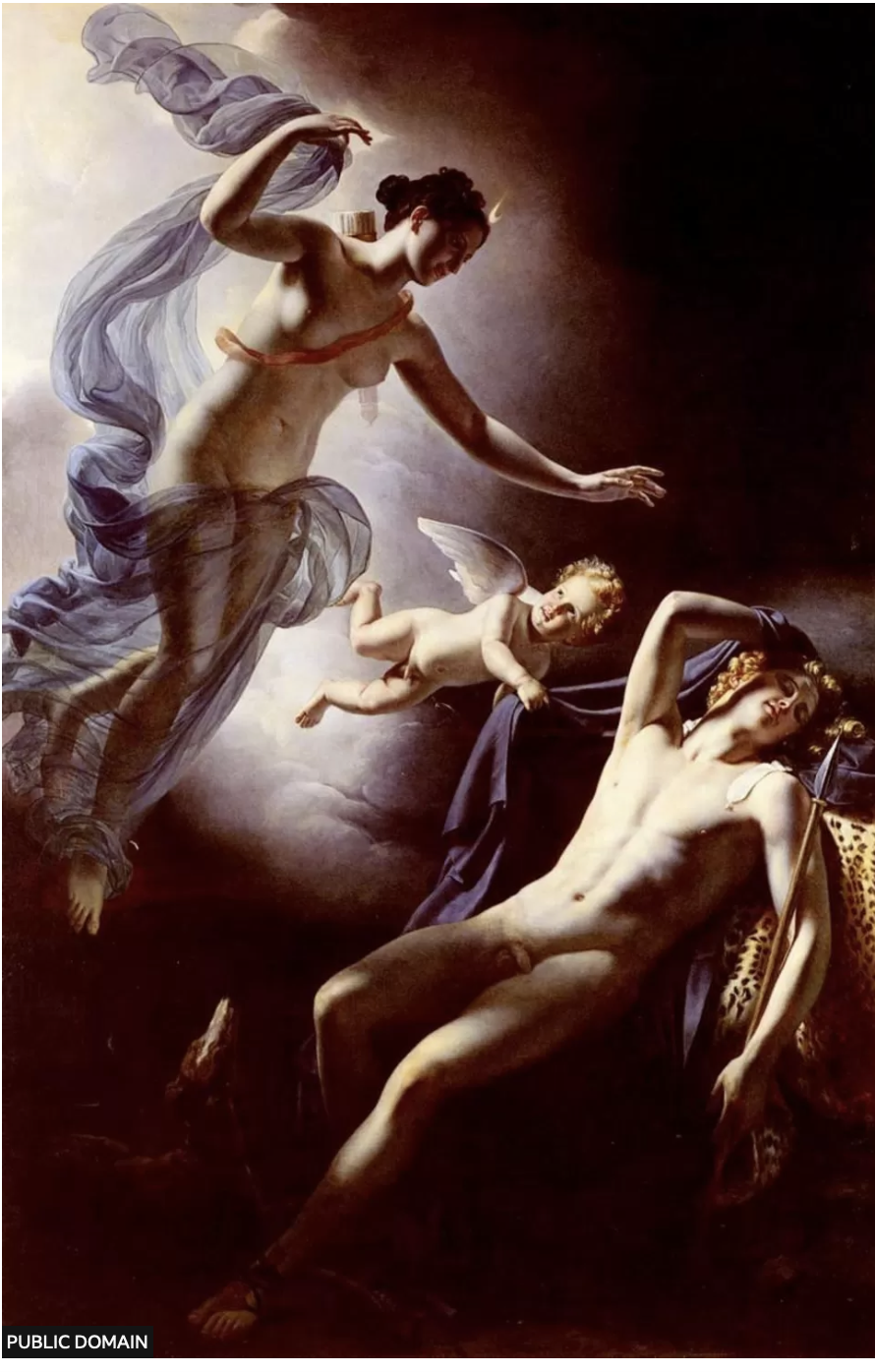
Diana and Endymion, Jérôme-Martin Langlois, 1822, Credit: Public Domain
Madonna has yet to respond to the loan request. Her decision whether to accept or reject the offer to negotiate might be influenced (hopefully, positively) by certain outcomes of other high-profile celebrities who have faced ownership claims against artwork held in their personal collections.
Other Celebrities With Problematic Art
One path for some has been to return the work outright. As we discussed previously, Nicolas Cage returned a dinosaur skull he bought at auction once it was established that it had been illegally excavated. Another 80s icon, Boy George, was keen to return a contested piece to its claimant owner. In 2011, the stylish singer returned an icon to Cyprus, to later be reinstalled in the Church of St. Charalambos. The church’s bishop saw the icon in the background of a video interview filmed in Boy George’s home. He recognized the piece as one stolen from the church following Turkish invasion in 1974. Boy George’s graciousness in returning the piece is heartening (he went on record as “happy [to see] the icon going back to its original home.”
Another path forward for celebrities with problematic artwork is to negotiate in good faith with the claimants, in lieu of lengthy and costly litigation. Take, for example, a piece put up for auction by the stewards of the late Gianni Versace’s private art collection. In 2010, a painting that once hung in Versace’s Lake Como villa was consigned for auction at Sotheby’s in London. The listing, a portrait by Johann Zoffany entitled Portrait of Major George Maule caught the eyes of the direct descendants of the painting’s owner. The descendants contacted the Art Loss Register, who negotiated with Sotheby’s. After what was reported as an amicable mediation, the piece was pulled from auction. The work was returned to its original owners, who were “overjoyed” to be able to hang the painting from their own walls.

Van Gogh’s Vue de l’Asile et de la Chapelle de Saint-Remy, gracing the catalog cover for the sale of Elizabeth Taylor’s collection (Credit: Christie’s LLC)
Negotiating has also proven to be a feasible and mutually beneficial option for the Andrew Llyod Webber Art Foundation. After the Foundation put up a Picasso for auction at Sotheby’s in London, heirs of a Jewish family claimed that the work was sold under duress to the Nazi Party by their ancestor. In 2010, the parties reached an agreement of undisclosed terms (and, as the painting is valued at over $60 million, a substantial award was likely given to the family). Following the negotiations, the family willingly relinquished all ownership claims of the work, and seemingly walked away content with their end of the bargain.
However, some celebrities – either with the budget for litigation or incredibly personal ties to the contested work at issue (or both) – are willing to fight in court. Elizabeth Taylor is one example. She defended herself in litigation after she was contacted about a piece in her personal art collection in 2004. The 1889 work, a Van Gogh painting entitled View of the Asylum and Chapel at Saint Remy, was sold at auction to the actress at Sotheby’s in London in 1963. Decades later, descendants of a Jewish woman named Margarete Mauthner claimed that the painting was rightfully theirs. They asserted that it had been sold by their ancestor under duress by Nazis. The Orkin family sought redress under the 1998 U.S. Holocaust Victims Act, but was barred from recovery due to the statute of limitations. The 9th Circuit upheld the lower court ruling that the Orkin family had missed their chance to claim ownership, and Elizabeth Taylor kept her painting in her L.A. residence.
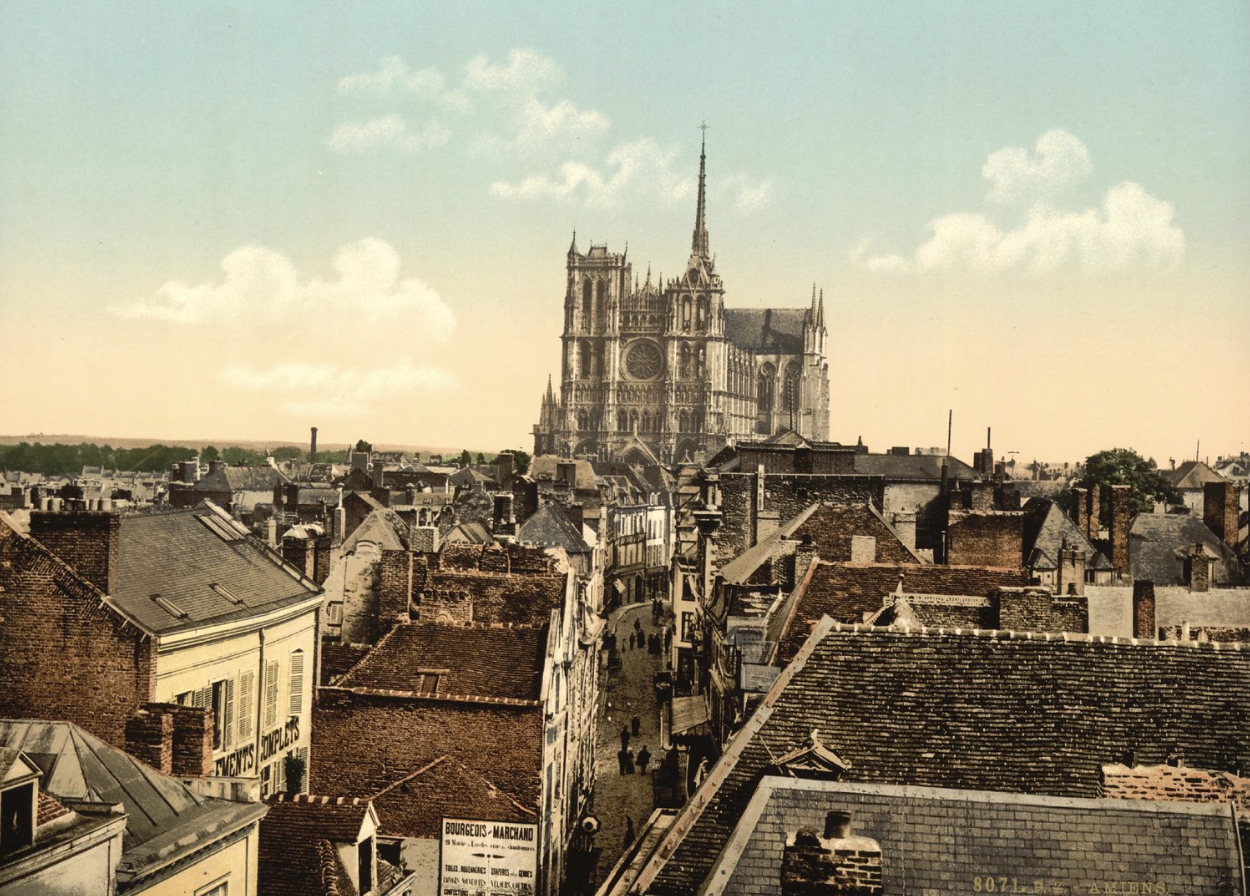
Amiens, France. Credit: Library of Congress, Prints and Photographs Collections, licensed via pingnews
Madonna’s Next Steps
Taylor’s unwillingness to relinquish ownership stands in contrast to the negotiations and settlement offers made by Versace and Andrew Llyod Webber’s Art Foundation. The potential for high-profile art buyers to avoid litigation and to instead reach amicable agreements presents a cooperative path forward and an overall more sustainable approach. These types of mediations, which may include the return of the work, give power and voice to claimants, without demonizing buyers who may have been unaware of the work’s problematic provenance. (This is particularly important in the case of celebrity buyers, who often work through intermediaries.) This ensures that justice is served, and that past traumas are recognized, while promoting the preservation and enjoyment of cultural heritage for generations to come.
The humanizing impact of high-profile celebrities who publicly acknowledge original ownership of a problematic work cannot be understated. When celebrities use their platform to give voice to people whose voices have been silenced, they set in motion healing work in the practicum of art and cultural heritage. What will Madonna do, moving forward? Perhaps she will be inspired to accept the loan offer and cooperate amicably with the City of Amiens.
After all, in the agreement put forth by Amiens, Madonna can still “keep her baby.”
.”
by Amineddoleh & Associates LLC | Dec 14, 2022 |
In this annual newsletter, Amineddoleh & Associates is pleased to share some major developments that took place at the firm and in the art world during 2022.
LITIGATION AND SETTLEMENT UPDATES
The “Goodwill” Marble Bust

The Marble Bust looted during WWII that was found in Texas and will be returned to Germany
Possibly the most talked about art law matter of the year was the return of an ancient marble bust to Germany. The 2,000-year-old artifact likely originated from Rome, but it was acquired by Bavarian King Ludwig I and then placed in a German museum from where it was looted during World War II. Our client, Laura Young, bought it at a local goodwill shop and ultimately returned it to Germany. It was an honor to advise her and work with her to negotiate the internationally celebrated return.
Copyright Infringement Lawsuit
At the start of the year, we filed a litigation in Iowa on behalf of a muralist, Chris Williams. His work was featured in an advertisement that aired during the Super Bowl. We are currently representing him in a lawsuit for copyright and a violation of his moral rights on the Visual Artists Rights Act.
ART & IP NEWS
One of our favorite things about the art market is that there is always something exciting happening in the art world. Some of our most popular blog posts from this year are found below.
Celebrities and Fossil Collecting
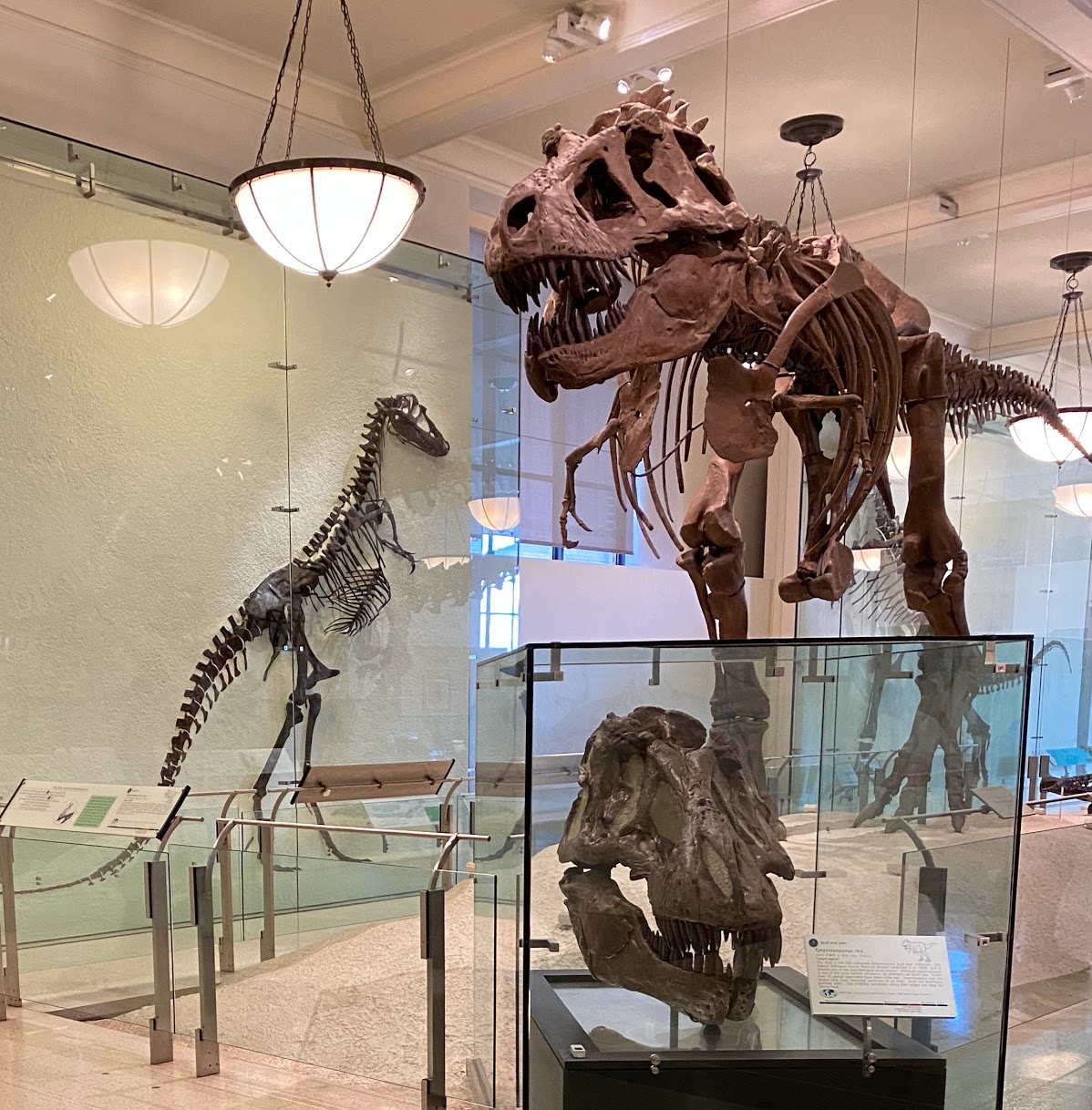
Skeletons in the American Museum of Natural History
In this blog post, our firm examined legal matters involving dinosaur fossils and skeletons, including purchases made by Nicolas Cage, Leonardo DiCaprio, and The Rock. Auction houses have faced growing interest in buyers seeking dinosaur bones. The sales have gotten a lot of attention, perhaps due to the trend of major celebrities making large, public bids for the pieces. As a result of the publicity, countries around the world from which fossils are illegally excavated have presented auction houses with ownership claims, based on their country’s property laws. Copyright law was also an issue for auction houses selling dinosaur skeletons this year because skeletons that are partly comprised of replica bones may come with intellectual property rights in the manufactured pieces.
Fashion Law and Protecting Brands
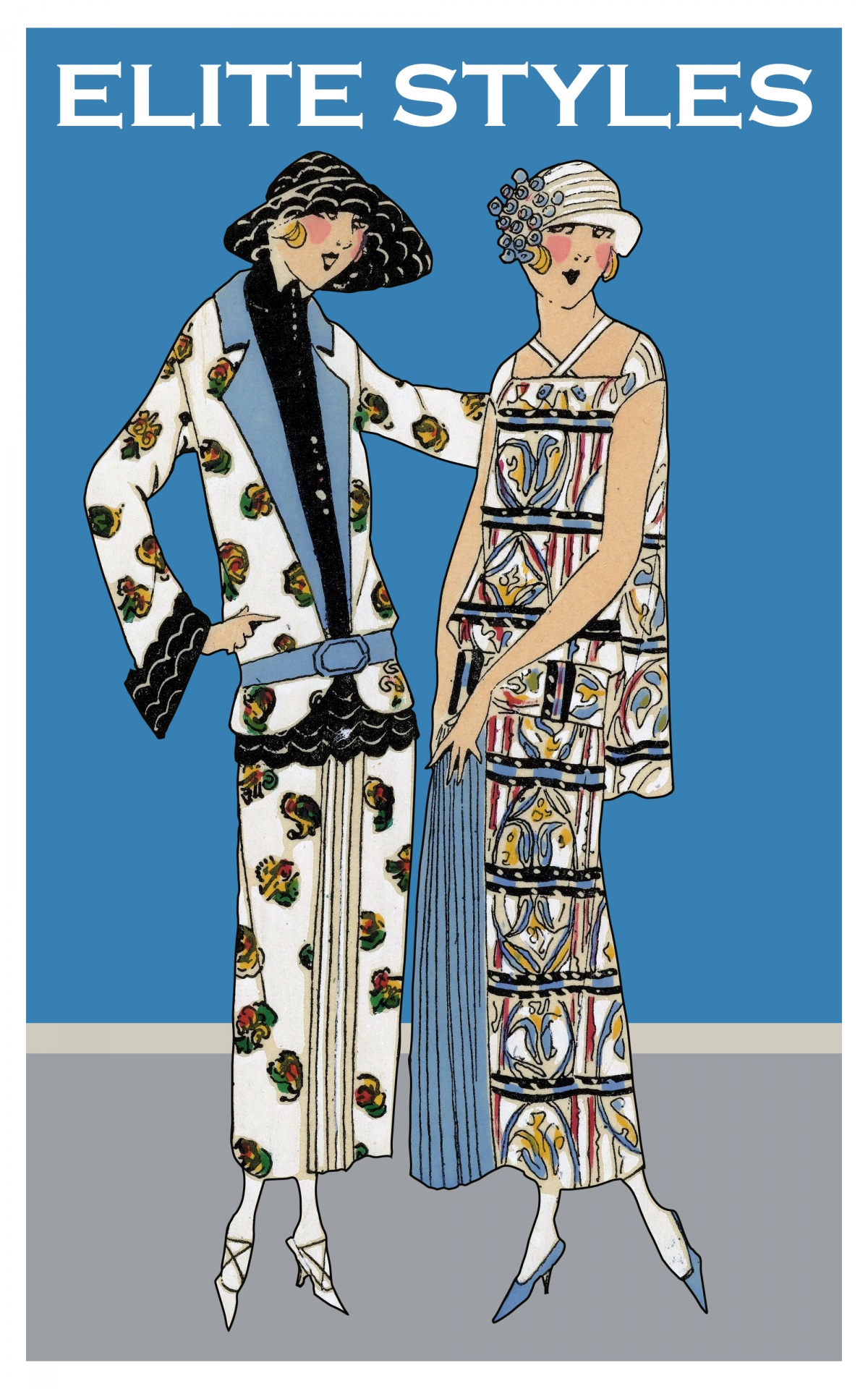 When does the law protect fashion brands? And what is the cost to other artists? Our firm answered these questions in this posts inspired by the Fall 2022 Fashion Weeks taking place around the world. Prominent fashion designers have been known to incorporate logos of other brands into their designs, often as a part of social commentary. Even where artistry is the intent behind the repurposed logo, these designers face financially devastating intellectual property claims from major the brands and companies who own the rights to the logo. Our firm considered how to balance protecting consumers from consumer confusion with giving designers the artistic liberty to create fashion that sparks social commentary. Read more on our website.
When does the law protect fashion brands? And what is the cost to other artists? Our firm answered these questions in this posts inspired by the Fall 2022 Fashion Weeks taking place around the world. Prominent fashion designers have been known to incorporate logos of other brands into their designs, often as a part of social commentary. Even where artistry is the intent behind the repurposed logo, these designers face financially devastating intellectual property claims from major the brands and companies who own the rights to the logo. Our firm considered how to balance protecting consumers from consumer confusion with giving designers the artistic liberty to create fashion that sparks social commentary. Read more on our website.
New York Raises Holocaust Awareness Through New Law
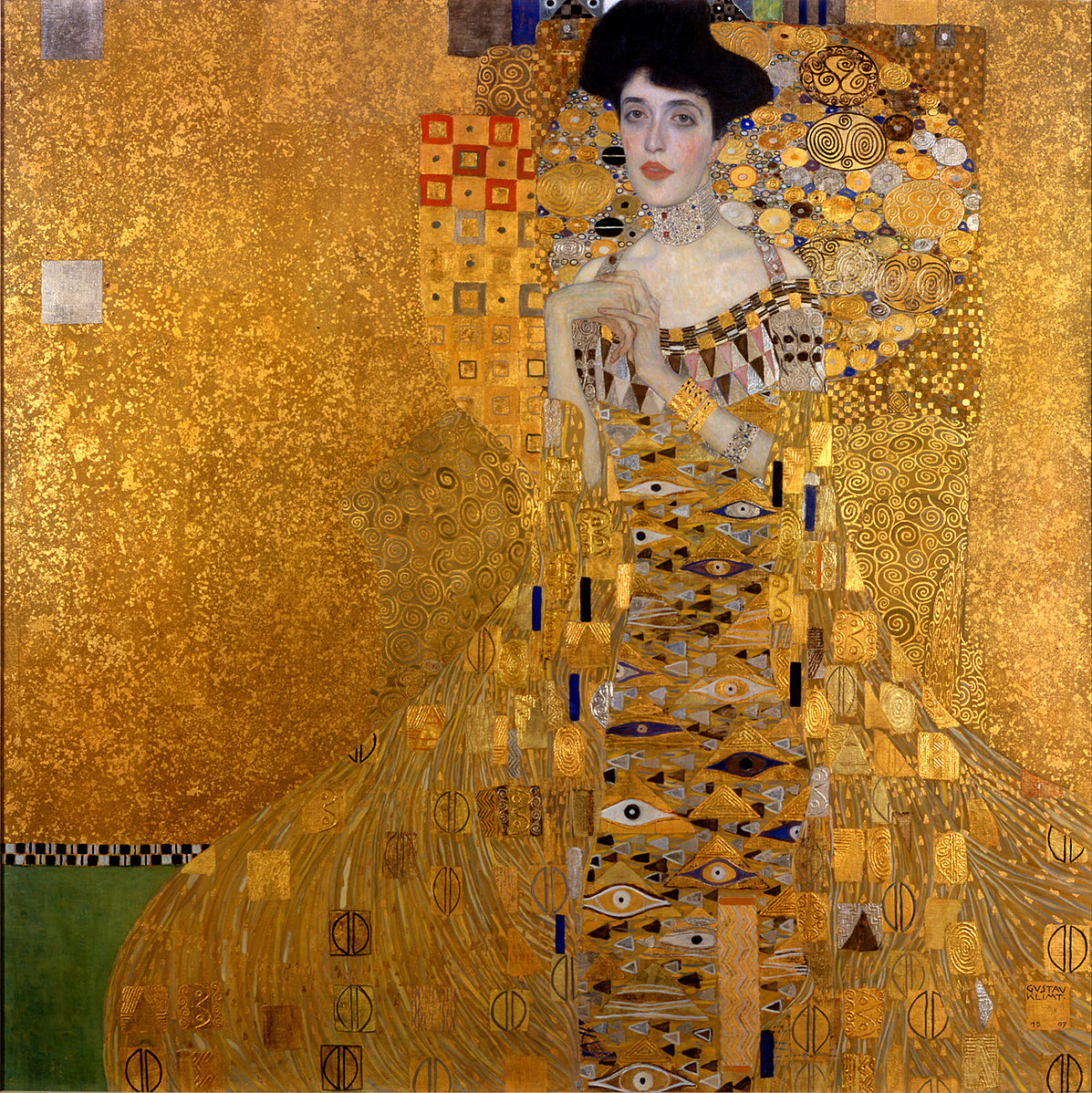
Gustav Klimt’s Woman in Gold
New York State now requires museums to post which artworks on display have links to the Holocaust. The New York bill, which was signed into law on August 10, 2022, accompanied two other Holocaust related bills aimed to combat rising reports of antisemitism. Our firm revisited the difficulty of proving provenance for items acquired during the Holocaust and shortly following WWII. The restitution of these works to families from which the pieces were stolen is incredibly healing.Unfortunately, such claims for the return of priceless works of art often have to overcome enormous legal hurdles, such as the difficulty of proving provenance in court and FSIA claims brought by countries who now claim possession. Read more on our website.
LAW FIRM UPDATES AND EVENTS
New Team Members
Our firm welcomed two new members to join our team, Yelena Ambartsumian and Maria Cannon. Yelena joins the firm as Counsel, while Maria joins us as an associate. We are proud to have Yelena and Maria as members of our team, and we wish them both a warm welcome.
Firm Founder Listed by Chambers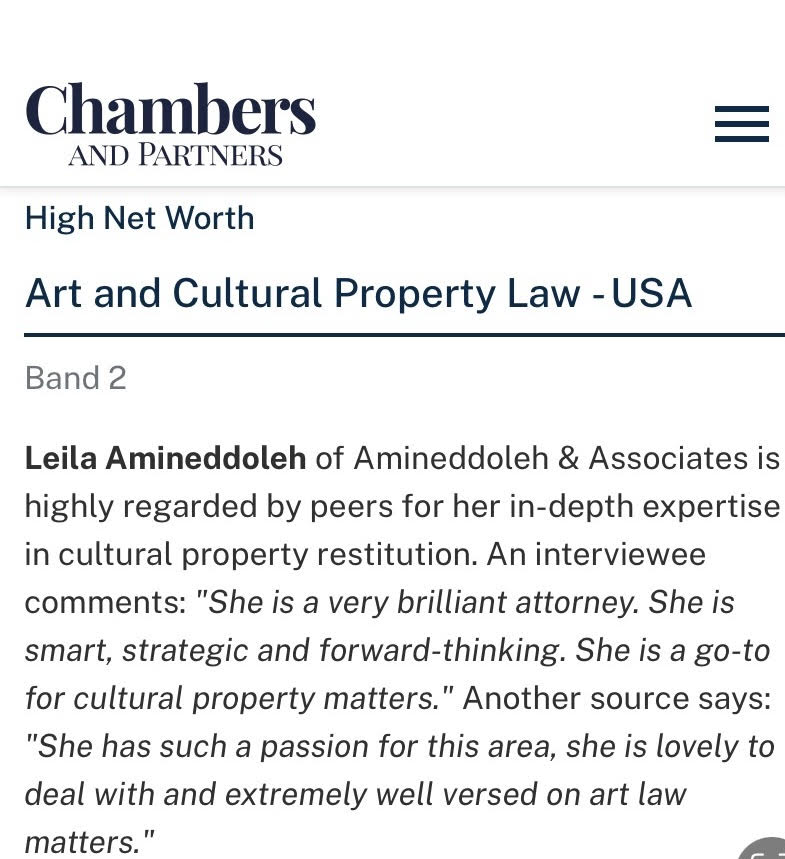
This year, firm founder Leila A. Amineddoleh was recognized by Chambers and Partners High Net Worth Guide for her work in Art and Cultural Property Law. The publication named Leila “a brilliant attorney,” and “a go-to for cultural property matters.” The publication also remarked on her passion for art law and her wealth of experience in the field. Read more here.
Art Law Conferences
Congratulations to our firm’s founder Leila A. Amineddoleh, who successfully chaired the 14th Annual NYCLA Art Law Institute, one of the most anticipated events of the year. Earlier in the year, in March, Leila presented the keynote speech at Yale University’s conference “Dura-Europos: Past, Present, and Future.” The conference focused on the systematic looting of Dura-Europos that took place during the Syrian civil war and during prior millennia. Leila presented on the history of cultural heritage looting and modern efforts to prevent such plunder. Read more about the conference here.
Leila was also a speaker at the Salmagundi Club, one of the oldest arts organizations in the U.S. Her other speaking engagements included moderating a panel for Art Appraisers’ Association Art Law Day and for Fordham’s Intellectual Property Law Journal’s 30th Annual Symposium, “Duplicate, Decolonize, Destroy: Current Topics in Art and Cultural Heritage Law.” In addition, she spoke at conferences hosted by Cardozo School of Law and Notre Dame School of Law. At Cardozo School of Law, Leila spoke on a panel at a symposium discussing cultural property ownership. Read more here. At Notre Dame’s Journal of International and Comparative Law Symposium, she served as panelist at the symposium, “International and Comparative Approaches to Culture”, and discussed antiquities disputes and repatriation of cultural heritage.
Associate Claudia Quinones presented on the “What’s New in Art Law?” panel at the 14th Annual NYCLA Art Law Institute. Her presentation covered title and ownership disputes, new technologies, and climate change activism in the art world. Details about the conference can be found here.
Yelena’s speaking engagements included Fordham Law School’s 30th Annual Intellectual Property Law Journal Symposium as a panelist on “Erased: Protecting Cultural Heritage in Times of Armed Conflict.” She also was a panelist at American University of Armenia’s Center for Truth and Justice Inaugural International Conference, “Cultural Heritage at Stake: How to Preserve, Mitigate Damage, and Punish Destruction.” Read more about the conference here.
IN THE PRESS
Leila appeared in the New York Times a number of times this year, in addition to Artnet, The Art Newspaper, the Observer, the Washington Post, USA Today, People Magazine, and Town + Country Magazine. She discussed a variety of topics, including the art market, cultural heritage disputes, Nazi-looted art, intellectual property disputes, and art collecting practices. Leila also appeared on WPIX-NY and in a number of podcasts.
CLIENTS AND REPRESENTATIVE MATTERS
Sculpture Garden Commission at the Smithsonian Institution
We are very proud to have served as legal counsel to famed artist Hiroshi Sugimoto for a number of his commissions, including his highly anticipated sculpture garden at the Hirshhorn Museum, part of the Smithsonian Institution.
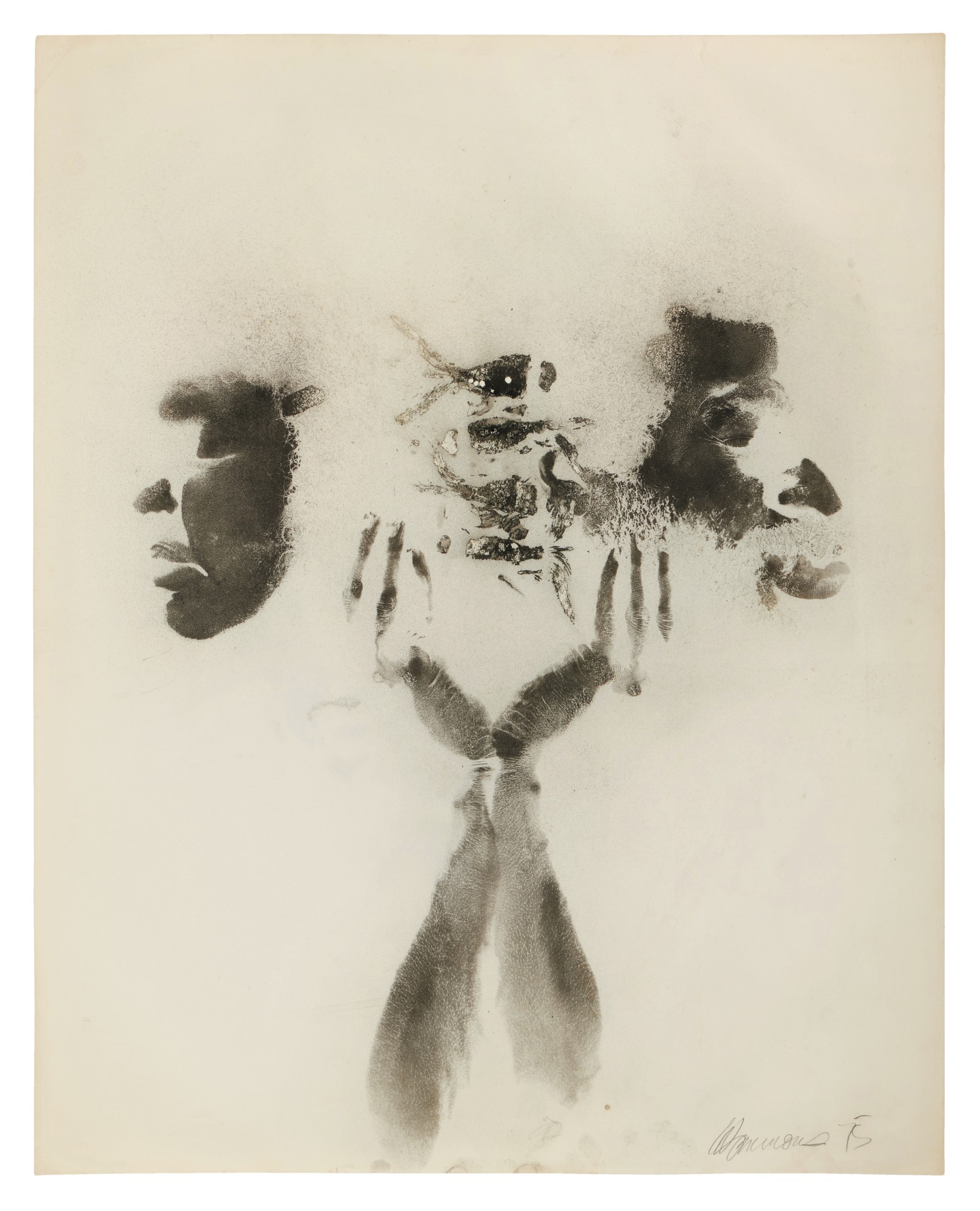 Auction Sales
Auction Sales
We worked with a number of clients to assist them with consigning art for sale at auction. One of our clients is the collecting family that consigned three works by David Hammons for the Sotheby’s Contemporary Evening Auction and one work at the Contemporary Curated sale earlier in the spring. Sotheby’s touted these works and their provenance, after the paintings remained with our clients for nearly five decades. All four of the works performed well, with two of them selling for above their high estimates.
Trademark Clients
We continue working with brands, artists, and companies by advising and serving as trademark prosecutors. Included among our clients are luxury watch brands, fragrance companies, and musicians, including multi-platinum songwriter and produced Jonas Jeberg.
Advising Art Market Players on New Platforms
While we often work with traditional art market participants (including artists, collectors, foundations, auction houses, museums, art advisors, and art experts), we are also happy to be at the forefront of the art and cultural world. As new art platforms and technologies develop, we are pleased to work with exciting online galleries, NFT platforms, novel art collecting exchanges, and artists exploring new media. We look forward to continue cutting edge work in the art sector.
On behalf of Amineddoleh & Associates, we wish you a happy and healthy holiday season and a wonderful and prosperous new year.






 Leila is the feature story of Boston College Magazine’s Winter 2023 issue. The article follows Leila’s art law career along with the story of the looted marble bust that was restituted to Germany in 2022. You can read the article
Leila is the feature story of Boston College Magazine’s Winter 2023 issue. The article follows Leila’s art law career along with the story of the looted marble bust that was restituted to Germany in 2022. You can read the article 





 When does the law protect fashion brands? And what is the cost to other artists? Our firm answered these questions in this posts inspired by the Fall 2022 Fashion Weeks taking place around the world. Prominent fashion designers have been known to incorporate logos of other brands into their designs, often as a part of social commentary. Even where artistry is the intent behind the repurposed logo, these designers face financially devastating intellectual property claims from major the brands and companies who own the rights to the logo. Our firm considered how to balance protecting consumers from consumer confusion with giving designers the artistic liberty to create fashion that sparks social commentary. Read more on our
When does the law protect fashion brands? And what is the cost to other artists? Our firm answered these questions in this posts inspired by the Fall 2022 Fashion Weeks taking place around the world. Prominent fashion designers have been known to incorporate logos of other brands into their designs, often as a part of social commentary. Even where artistry is the intent behind the repurposed logo, these designers face financially devastating intellectual property claims from major the brands and companies who own the rights to the logo. Our firm considered how to balance protecting consumers from consumer confusion with giving designers the artistic liberty to create fashion that sparks social commentary. Read more on our 

 Auction Sales
Auction Sales